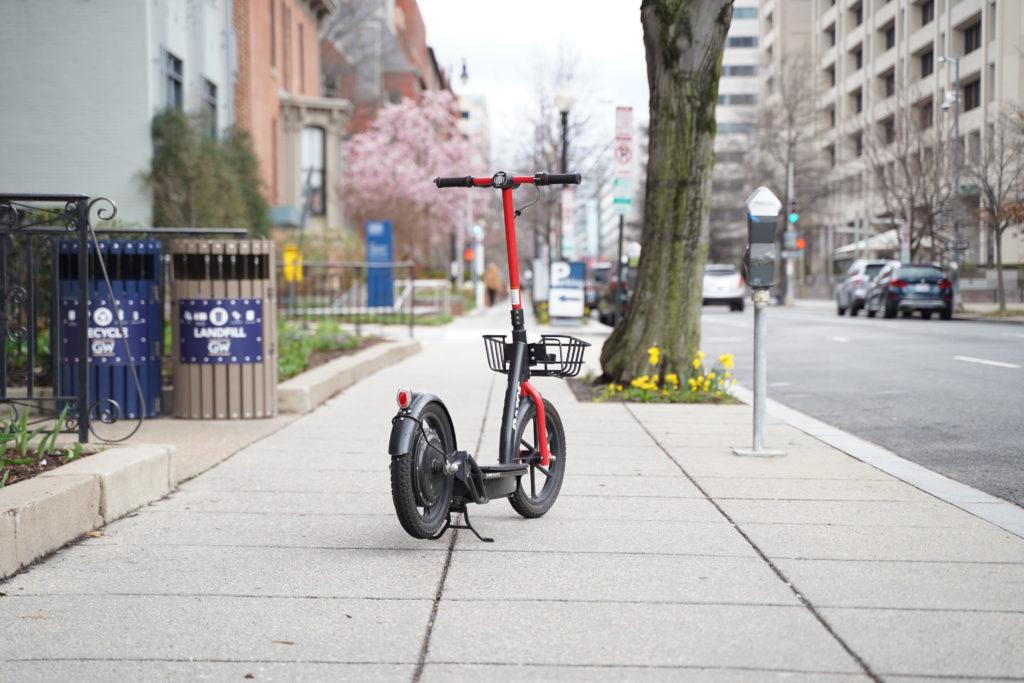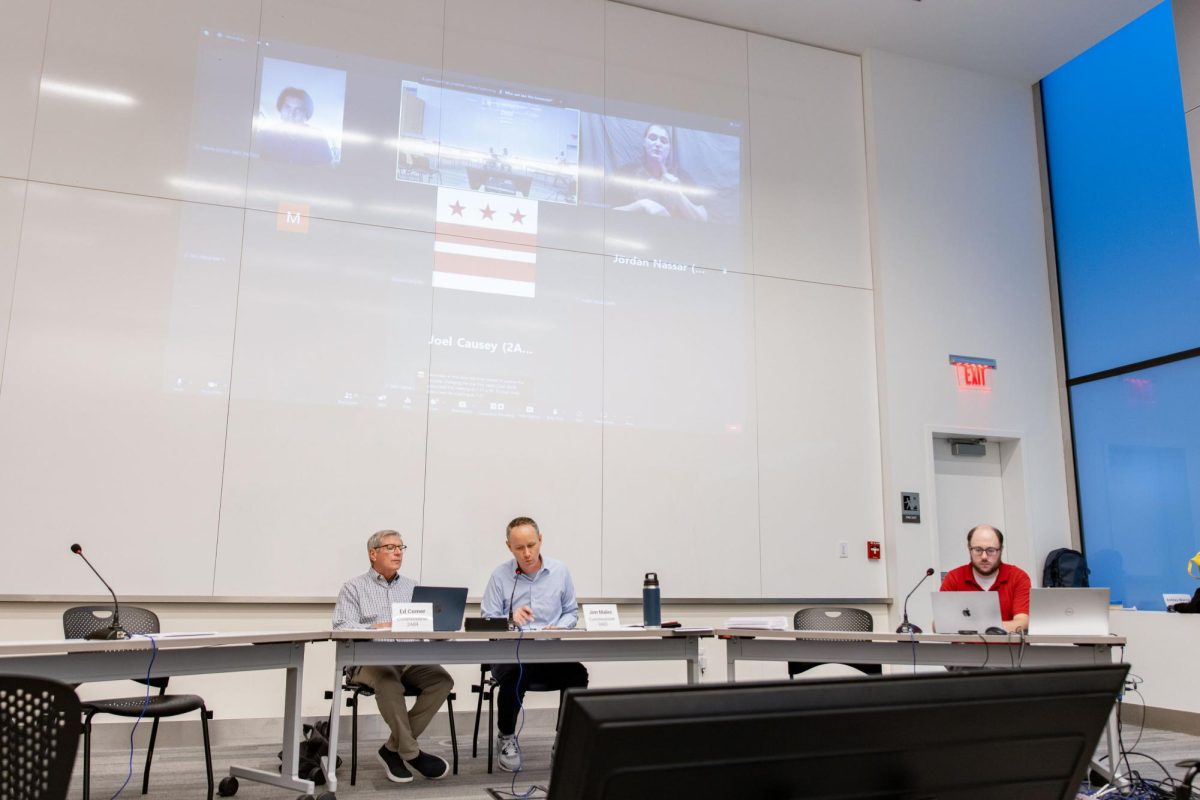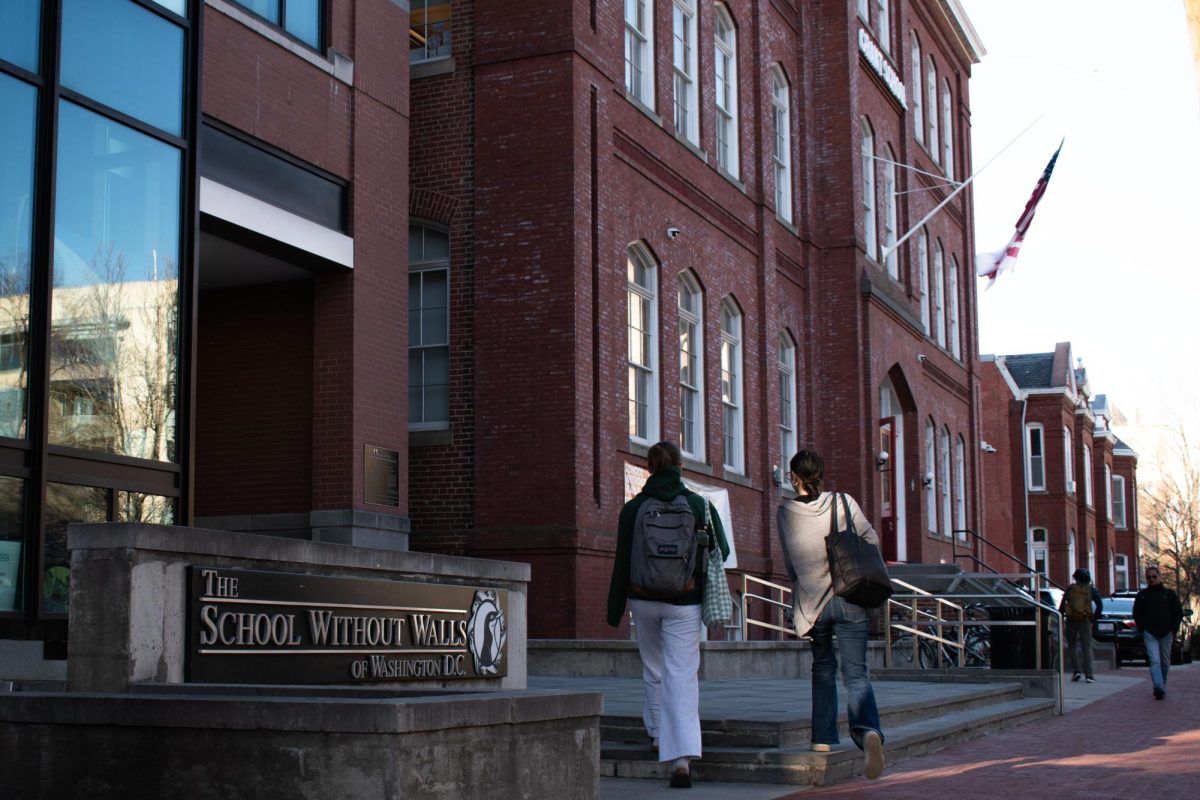Calls to extend campus sidewalks for better social distancing remain unanswered as 500 students prepare to move back to campus this fall.
The Foggy Bottom and West End Advisory Neighborhood Commission passed a resolution last month calling on the D.C. Department of Transportation to extend campus sidewalks ahead of the fall semester. Senior and ANC Chair James Harnett said that request still remains under city review, raising concerns about campus safety amid the COVID-19 pandemic.
He said a decision may come this week, and he hopes city officials will follow through on the ANC’s calls. A DDOT spokesperson declined to comment.
A map posted online earlier this year by alumnus Matthew Holden indicated that most walkways on campus are too narrow to enable social distancing in the area.
Holden said city officials have taken too long to install sidewalk extensions throughout the District. He said the city’s plan in June to designate Slow Streets with speeds of 15 miles per hour or less did not expand beyond a single stretch of S Street in Ward 2, located more than a mile away from campus.
“The speed at which DDOT has been installing things like the Slow Streets and expanded sidewalks has not been great,” he said. “I like that they’ve finally started to do some things besides the initial expansion near some grocery stores, but the agency seems to have a lack of urgency.”
The commission’s vote last month pressured DDOT officials to install sidewalk extensions and “parklets,” restaurant seating that occupies parking spaces, at several on-campus locations. At that meeting, commissioners highlighted seven streets that should receive sidewalk extensions and two areas needing parklets, touching up 14 blocks across the Foggy Bottom Campus.
Harnett said streets and sidewalks without these extensions on campus are not ready for a rise in pedestrian traffic this fall. As he awaits the city’s plan, Harnett said the widths of existing sidewalks will heighten pedestrians’ risk of transmitting the coronavirus to one another.
“We need to be doing everything we can to keep people safe,” Harnett said. “And the best way to do that is to keep people physically apart. And we need to be looking at all the public policy options on the table.”
Harnett said he hopes the sidewalk extensions will take the shape of yellow and orange plastic barriers that will be visible and easy to install and remove, unlike the concrete barriers that line the entrance to the U.S. State Department and plastic bollards, short posts, that protect bike lanes. He said the question still remains whether DDOT and the University have the supply of plastic barriers needed to execute the ANC’s full proposals.
“I’m more concerned about their ability to have the resources to deploy these safety measures,” Harnett said. “And it’s my job as an advocate and as somebody who is fighting for what students need and what our community members need to be able to move that forward and to make sure that DDOT has the resources they need to keep people safe.”
While the sidewalk extensions are awaiting government approval, plans will move forward to install a parklet in front of Duke’s Grocery at The Shops at 2000 Penn, Harnett said. Although there is no current timetable for the renovation, Harnett said city workers will clear out parking spaces in front of the facility on I Street for added restaurant seating to be used by businesses housed in the shopping center.
“We are moving forward expeditiously to make sure that our local and small businesses have the space that they need to operate,” he said.
The commission may also request the entire street to be shut down on weekends or select times, like evening hours, for restaurants to free up additional street space when there might be more pedestrian activity in the area, he added. Mayor Muriel Bowser lowered speed limits across the District as part of the Safe Streets initiative in June to ensure cars slow down where there is more foot traffic.
Harnett said installing one parklet is “insufficient” in meeting the campus’ needs to expand public space for social distancing. But following the University’s decision to move classes online and restrict building access this fall, the city could roll back plans to install every extension because fewer students are returning to campus, Harnett said.
“Because we moved this plan back when the University was planning on bringing back six to seven thousand students instead of about 1,000, we might not need as much as we thought we would,” he said.
Harnett said the city could refrain from adding extensions in front of buildings that students will no longer need to use, like proposed installations on E Street that would have widened sidewalk space in front of the Elliott School of International Affairs and 1959 E St. But he added that street space should still be wide enough for the few hundred returning students.
[gwh_image id=”1123052″ credit=”Courtesy of James Harnett” align=”none” size=”embedded-img”][/gwh_image]
“At the end of the day, these sidewalks are still too narrow,” he said. “Whether you’re talking about bringing 1,000 students back, 5,000 students back or 10,000 students back, they’re still too narrow for people that want to safely physically distance from one another.”
As the Foggy Bottom neighborhood awaits DDOT’s decision to execute the ANC’s proposals, Harnett said the chances of the new sidewalk extensions rest on the commission’s ability to uphold strong relationships with the Foggy Bottom neighborhood and the District government.
“A plan where DDOT does nothing is not acceptable to myself,” Harnett said. “It’s not acceptable to my constituents. It’s not acceptable to the neighbors and community members across our neighborhood, and we’re going to demand that they act.”







